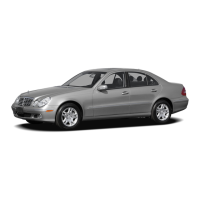74
Safety and Security
Occupant safety
In this section you will learn the most im-
portant facts about the restraint systems
of the vehicle.
The restraint systems are
앫 Seat belts (컄 page 86)
앫 Child restraints (컄 page 96)
앫 Lower Anchors and Tethers for
CH
ildren (LATCH) (컄 page 95)
Additional protection potential provide
앫 Supplemental Restraint System (SRS)
with
앫 Air bags (컄 page 76)
앫 Air bag control unit (with crash
sensors)
앫 Emergency Tensioning Device
(ETD) for seat belts (
컄 page 89)
앫 Seat belt force limiter (컄 page 89)
앫 Active head restraints (컄 page 90)
Air bag system components with
앫 Front passenger front air bag off
indicator lamp (
컄 page 85)
앫 Front passenger seat with Occupant
C
lassification System (OCS)
(
컄 page 81)
Although independent systems, their
protective functions work in conjunction
with each other.
The SRS system conducts a self-test when
the ignition is switched on and in regular
intervals while the engine is running. This
facilitates early detection of malfunctions.
The
1 indicator lamp in the instrument
cluster (
컄 page 28) comes on when the
ignition is switched on and goes out no
later than a few seconds after the engine
was started.
The SRS components are in operational
readiness if the
1 indicator lamp is not
lit when the engine is running.
A malfunction in the system has been
detected if the
1 indicator lamp:
앫 fails to go out not later than approxi-
mately 4 seconds after the engine was
started
앫 does not come on at all
앫 comes on after the engine was started
or while driving
i
For information on infants and children
traveling with you in the vehicle and restraint
systems for infants and children, see “Children
in the vehicle” (
컄 page 91).
164.boo Seite 74 Freitag, 30. März 2007 12:54 12

